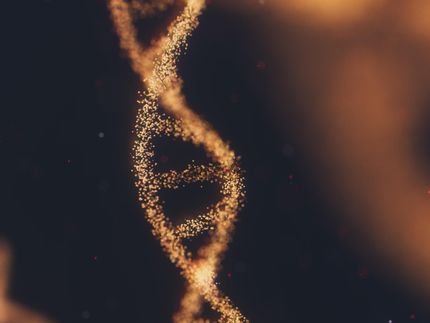CSIC spin-off company develops technology to prevent drug counterfeiting
The company Molecular Gate, created by ICMAB researchers, offers a smart labeling material based on nanotechnology only visible by polarized light.
A CSIC spin-off company has developed a nanotechnology-based method to improve product labeling to prevent counterfeiting. The technology consists of controlling the nanostructure of the elements printed on the surface of the product, taking into account their molecular orientation and the composition of the materials. The idea is that the printed security feature is only revealed when viewed with a simple polarization system, such as a cell phone camera, while remaining invisible to the naked eye.

Mariano Campoy-Quiles and Aleksandr Perevedentsev, founders of Molecular Gate
ICMAB-CSIC
The method has been developed by researchers Mariano Campoy-Quiles and Aleksandr Perevedentsev, from the Institute of Materials Science of Barcelona (ICMAB-CSIC), who have created the company Molecular Gate S.L, which has the license to implement this patented technology.
One of the first applications of this technology is aimed at preventing the counterfeiting of drugs and vaccines. The company will create anti-fraud components for typical pharmaceutical industry packaging, such as bottles and blister packs, to ensure that the products are authentic.
Molecular Gate S.L. offers a technology to prevent product counterfeiting on two levels, for both consumers and companies, with a single printed element on pharmaceutical product packaging that is easily scannable with a cell phone, but almost impossible to replicate.
"The systems that exist on the market to ensure product authenticity have numerous limitations; they tend to be expensive technologies and use bulky equipment, and most require cold chain or degrade with ultraviolet rays, which introduces limitations in transportation and end use," Perevedentsev explains.
Most current solutions only focus on enterprise-level security, with a hidden security element to authenticate the package. Customer-level security is more desirable and versatile, but is more difficult to implement, because holograms, which are very common, are now considered insufficiently secure, while other possible systems are often too expensive or require specialized hardware or software for verification.
The company aims to provide a unique and effective security system for the pharmaceutical market that will help verify the authenticity of products, such as vaccines, while ensuring proper handling during storage and transport. The researchers anticipate that the technology "will not only enable direct, machine-readable visual verification by a simple machine, but will also be nearly impossible to counterfeit by other methods."
"While thinking about the possible applications of this technology, we remembered the work of our friend and colleague Professor Paul Smith (ETH Zurich), who introduced polarizing elements as security features in Swiss banknotes," Campoy-Quiles explains. "We realized that we could go a step further in that field, as our technology made it possible to write patterns and drawings polarized in different directions, taking advantage of polymer chains oriented in different directions on a micrometer scale."
Note: This article has been translated using a computer system without human intervention. LUMITOS offers these automatic translations to present a wider range of current news. Since this article has been translated with automatic translation, it is possible that it contains errors in vocabulary, syntax or grammar. The original article in Spanish can be found here.
Other news from the department science
Most read news
More news from our other portals
Something is happening in the life science industry ...
This is what true pioneering spirit looks like: Plenty of innovative start-ups are bringing fresh ideas, lifeblood and entrepreneurial spirit to change tomorrow's world for the better. Immerse yourself in the world of these young companies and take the opportunity to get in touch with the founders.























































